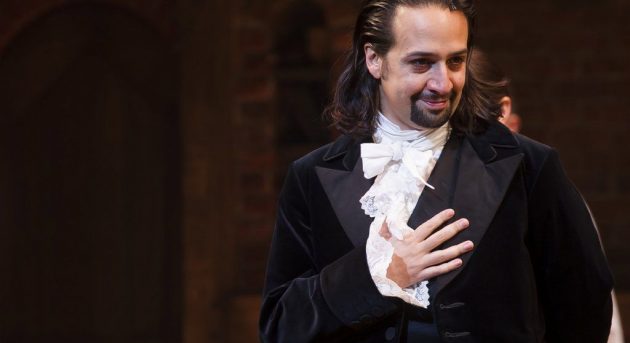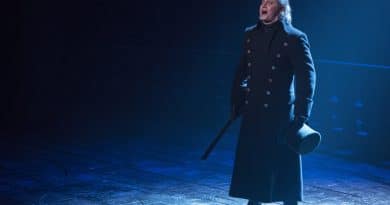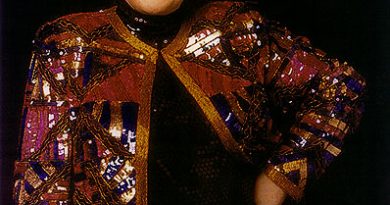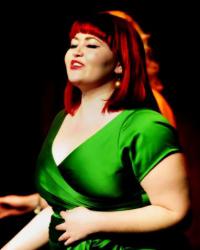Changing the default Australian musical theatre experience
In an interview regarding his hit new musical Hamilton, Lin-Manuel Miranda recently posed a question that led me to examine each piece of professional musical theatre I have ever taken in. Referring to audiences watching his unprecedented cast consisting of people of colour performing the roles of historically white figures, Miranda asks, “So if Hamilton’s your default musical theatre experience… What are you going to make?”
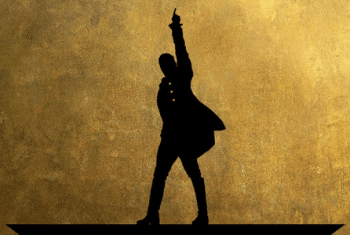
Over the last two professional Australian musical theatre seasons, much has been said behind closed doors (and on social media) about the tendency of our industry to continuously finance revivals. As consumers, we all understand the logistics and necessity of this decision – if we want to see a commercially risky show like Once on our shores, our big producers first need to fill their pockets with guaranteed revenue from a revival along the lines of Rocky Horror or Grease. Revivals make a lot of economic sense within our MT industry, because they allow producers to play on the nostalgia effect (whereby an audience will return to see a show that has engaged them in the past), therefore giving their productions the best chance at the box office and continued work for industry professionals. Putting the economic debate aside, examining the current state of revivals versus new material in Australia from the perspective of a person trying to answer Miranda’s question made me realise that our country-wide reliance on revivals as our main form of musical theatre entertainment has created a stagnant default musical theatre experience for consumers.
“Default musical theatre experience” is a new term, but not a new concept. The words reference the base line or general expectations you have for a musical, based on an amalgamation of previous experiences. To me, the phrase encapsulates the idea that an audiences can only expect a performance to be at a level they have previously known. For example, if The Sound of Music, Camelot and Carousel represent your theatre experience, a show like RENT is quite possibly going to widen your definition of what can be included under the umbrella of musical theatre. This isn’t to say that “new” theatre is the only way forward – revivals most certainly have their place – but innovation and experimentation throughout all aspects of the stage must be given a space within our big theatres, so that the themes and processes of theatre can be just as accessible to present and future generations as they were to audiences of the past.
I have no issue with revivals as their own works of art, but a problem becomes clear when you realise that our audiences are consistently viewing material that represents social viewpoints popular in the time the musical was first created. The popularity of My Fair Lady, for example, is a product of its social and historical context, and it could be argued that the story it tells flies completely in the face of the social beliefs we hold dear today. We live in a society where Eliza would tell Higgins to stuff his gendered, classist abuse, and to find his own goddamn slippers, so why is it that we so easily accept such outdated theatre as the general stage experience in Australia? You may argue that any and all forms of entertainment should not necessarily be expected to educate or inform, but it is foolish to believe that the words and stories people are exposed to do not position their ideas and subsequent actions. Modern audiences owe pieces from the Golden Age of musical theatre our gratitude for giving older generations’ wonderful material on which to base the navigation of their moral compass, but we need the same from modern theatre. We cannot continue to pay to see revival theatre in the hopes that themes and context from the past will translate to contemporary times – we need to focus our energy instead on creating (or at least sourcing) theatre that has built on the ideas of the past, and now has something new to say or a modern way to say it.
As Broadway and the West End increasingly move with the times by financing musicals that feature casts of racial diversity, of differently-abled actors and current stories, it is disappointing to be so close yet so far from the evolutionary work happening internationally. Through social media, young audiences have more avenues to pursue their theatrical interests than ever before, and it is maddening to see the representation many theatre fans so desperately crave happening at a rapid rate on the stage across the sea, yet moving so slowly in Australia. Overseas, the era of domination by white, heterosexual, cis-gendered and overtly male stories and storytellers is coming to an end, so why are musicals that include some or all of these elements still dominating our theatre scene?
The current generation of Australian theatre fans must be allowed the opportunity to experience the updated default musical theatre model, where diverse stories are welcomed by diverse people. Think of it this way – the work of Oscar Hammerstein had an immense influence on the work of Stephen Sondheim, and in turn, Sondheim’s work inspired the theatre written by the man referenced at the start of this piece, Lin-Manuel Miranda. There can be no new ideas, no revolution if this industry does not continue to improve upon the means it uses to tell stories. If young Australians are treated to the work of Hammerstein and Sondheim on a regular basis yet miss the evolutionary link of seeing contemporary, barrier-breaking shows by Miranda and other currently working theatre composers, then our theatre scene fails to keep up with the social progress of modern theatre. If we only see shows with a white cast, then we simply forget that stories of colour deserve equal representation on our stages, and if we only see able-bodied or straight/cis stories then we fail to give any thought to those we push outside of our definition of what theatre can and should be. If Hammerstein and Sondheim are our “default”, then the future generations of our MT industry will be trying to set the bar at a level that matches the achievements of theatre in Sondheim’s time, rather than Miranda’s – if our industry remains tied to revivals, we run the risk nationally of missing out on the work of undiscovered talent or modern visionaries like Lisa Kron and Jeanine Tesori, Brian Yorkey and Tom Kitt, Matthew Lee Robinson or Jason Robert-Brown.
I come back to the (expanded) original quote from Lin-Manuel Miranda.
“[…] What I love about theatre, honestly, is that it both embraces the new but it’s also our oldest art form. […] I am hoping that the waves Hamilton makes are, ‘Hey, look! A bunch of actors of colour were on stage and they made money,’ and, ‘Look! They don’t look like the people they were classically cast as and it didn’t matter for a freaking second that they didn’t look like that, because it gave us so much more by casting it the way they did.’ […] We’ve got 20,000 school kids coming to see the show over the course of the next year, they’re gonna pay $10 to see it – I’m excited to see what that kid writes. Because for them, Hamilton has always existed, and it’s just what musicals look like to them. So if Hamilton’s your default musical theatre experience… What are you going to make?”
We cannot allow our marquees to be adorned only with the names of shows that filled their theatres twenty, forty, or even sixty years ago. Australian audiences love a little nostalgia, but we cannot rely on the attitudes of the past to inform our social conscience today. The consequences of remaining locked in the past of musical theatre will see our audiences and industry professionals alike fall victim to outdated ideals, and will further stifle creative endeavours in this country. No, our professional musical theatre industry does not exclusively consist of revival theatre, but the majority of productions available to audiences over the past few years has represented a standard already achieved by our industry both technically and in terms of representation of diversity on stage and behind the curtains. It’s time to expect more.
Our country needs to invest in new theatre. If we want to see young audiences take ownership of the theatre scene, we need to see musicals that offer stories relevant to the struggles and triumphs of 2016 – our current default musical theatre experience is functional, but we need to stop recycling old material. Australian audiences need a new standard. We need to see musicals that connect with the social identity of the present, shows that allow diverse actors and creative teams to communicate important messages through narratives that concern themselves with the now. Ensuring that stories of the present populate the Australian musical theatre stage is the best way to guarantee the future of the art form.

